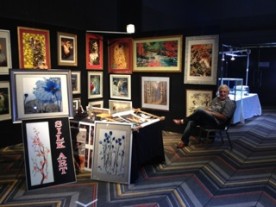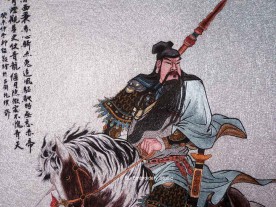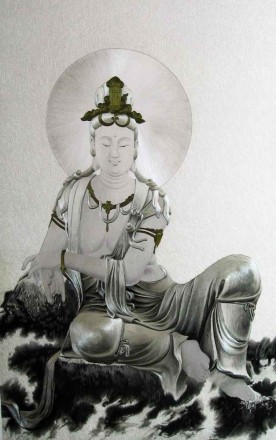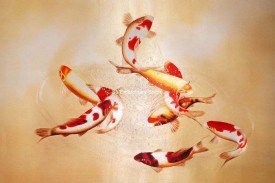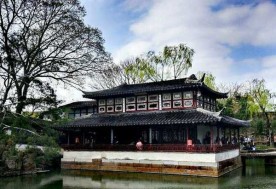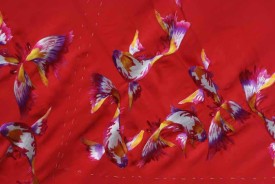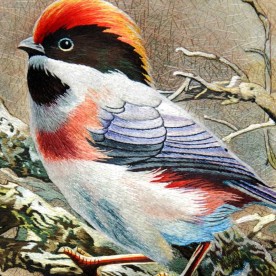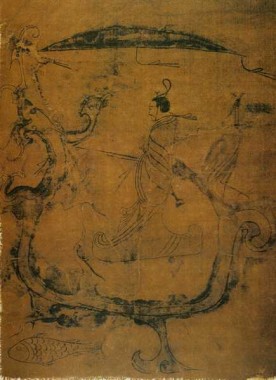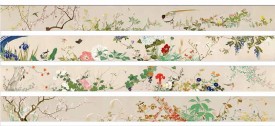We at Su Embroidery Studio are immensely grateful for Helen and Ross’s partnership. Their journey has not only increased our sales but also enriched the cultural fabric of our international community. We cherish the memories and successes we shared with them and continue to honor their contributions to our global mission. Their story is a reminder of the difference that passionate individuals can make in promoting and preserving cultural heritage...
Chinese Silk Embroidery Blog
- Jun 24 2024
Chinese Silk Embroidered Guan Gong Painting
Categories: Silk Embroidery in ChinaAt Su Embroidery Studio, we have created several remarkable silk embroideries depicting Guan Gong, each demonstrating the meticulous craftsmanship and deep cultural significance inherent in our art. These pieces not only showcase the silk hand embroidery skill of our embroidery artists but also convey the profound respect and reverence for Guan Gong that is deeply rooted in Chinese culture...
- Jun 23 2024
Guanyin in Chinese Silk Embroidery Art
Categories: Silk Embroidery in ChinaThe reverence for Guanyin extends beyond religious boundaries, influencing various forms of Chinese art, including painting, sculpture, and silk embroidery. The intricate artistry and profound symbolism associated with Guanyin make her a beloved subject for artisans, who strive to capture her serene beauty and compassionate essence in their works...
- May 11 2024
Chinese Silk Embroidery Art of Koi Fish
Categories: Silk Embroidery in ChinaIn the realm of Chinese silk embroidery, few subjects captivate the imagination and showcase the exquisite artistry of the craft quite like the koi fish. Renowned for their vibrant colors, graceful movements, and symbolic significance, koi fish have been a beloved motif in Chinese art for centuries ...
- Categories: Customer Story
At Su Embroidery Studio, we are overwhelmed with deep gratitude for the extraordinary privilege bestowed upon us to showcase our fine silk embroideries within the revered halls of the BAPS Swaminarayan Akshardham temple ...
- Categories: Silk Embroidery in China
In response to inquiries from our site visitors planning visits to this enchanting city, we've compiled this comprehensive guide to help you make the most of your Suzhou adventure ...
- Apr 29 2024
Custom Silk Hand Embroidery for Clothing
Categories: Silk Embroidery in ChinaIn this comprehensive guide, we'll address some of the commonly asked questions about our custom embroidery service, providing insight into the process of adding intricate hand embroidery to your garments ...
- Categories: Silk Embroidery in China
Birds have long captured the imagination of artists, serving as symbols of freedom, beauty, and grace in countless works of art. Today, we invite you to explore the exquisite world of avian art through a special lens – silk embroidery ...
- Categories: Silk Embroidery in China
Silk has long been revered as a medium for artistic expression in China, giving rise to two exquisite art forms: Chinese silk painting and Chinese silk embroidery. In our post today, we will explore the rich traditions and intricate techniques of these two ancient crafts ...
- Apr 23 2024
Nuido - The Timeless Art of Japanese Embroidery
Categories: Hand Embroidery in the WorldTraditional Nuido is characterized by its meticulous craftsmanship and the use of silk or metal threads, often embellished with gold and silver accents. Silk satin serves as the preferred fabric, mounted on frames to provide tension and enhance the threads' luminosity, resulting in stunning works of art that captivate the eye and touch the soul ...


